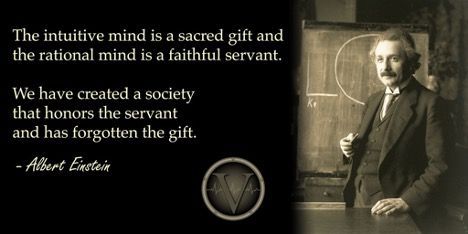Blog

By Maggie Johnson
•
March 7, 2024
STEP ONE: ASSESSMENT Some kids go into a business or career as an extension and continuation of a parent's career. They may enroll in college and university programs influenced by their parent or other dominant figure. This may make the parent happy to see their child continue their legacy, and the child may not know what they want to do, so following in their mom or dad’s footsteps seems logical. But what about the child’s possible but unrecognized aspirations? Is this the best path for the young person regardless of the familial relationship? Then there are those no one might influence, so they choose what seems to be the most expedient and most straightforward job choice at the time, but then they stay stuck in that job field or industry throughout their working lives. While they might do well, could they have achieved more, been happier, and more fulfilled if they had found a career planned on their uniqueness rather than spending 30 years working in a particular field by default? Even if you’ve started your career, it’s not too late to plan an adjustment for a career or role you would find more fulfilling. Everyone has distinctive talents and abilities and things they may or may not enjoy. To have a lifetime of career success, it makes sense to first understand what brings you joy and what your unique talents are. Even if you don’t know what those are now, then create a plan for the best way to discover them. What are your current abilities and competencies, and what steps can you take to enhance or improve them? Whether or not you work with a career coach, taking an assessment may help you find a fulfilling career path that is right for you. Many assessment tools, such as Hogan, DiSC, Profile XT, and others, are available. They can provide insight into cognitive and personality characteristics. Assessments can provide a deeper understanding of one’s strengths, weaknesses, values, and attitudes. Even if taking an assessment is not for you, you can perform your own exploration exercise to examine what tasks and actions you perform that bring you enjoyment and satisfaction and the aptitudes that enable you to perform them successfully. Then, match these to work types where similar tasks, actions, skills, and competencies are commonly utilized. Whittle down your likes and proficiencies as part of the exploration exercise. For example, if you initially come up with a broad scope, such as you enjoy figuring out details, sniffing out potential issues, and problem-solving, there would be a whole host of potential careers, from accountant to police detective. Thus, it’s best to narrow this further and further until you have the focus and direction for the potential roles and careers you will examine. As a starting point, you could take a simple approach by creating a spreadsheet with the following headings for each column: • Things I like to do • Actions required to do these things • Skills it takes to perform these actions • My proficiency level in these skills • Jobs/Roles that use these or similar skills • Corresponding career field • Is this a career I want to explore? Now fill in the spreadsheet accordingly. This exercise requires careful thought, so please do not rush through it. The objective is to identify possible job and career fields that might resonate with you. The last column, "Is this a career I want to explore?" is the most important. If your response is "No," then there is no need to proceed. However, if your response is "Maybe" or "Yes," then this exercise has provided you with valuable insights that you can pursue further. That’s it for now. Stay tuned for Step Two, which will include more suggestions for creating your career path.

By Maggie Johnson
•
March 5, 2024
In the ever-evolving landscape of today's business world, change is inevitable. Whether it's a restructuring, a merger, a shift in leadership, or new technologies, workplace changes can often be challenging for employees. For those of you who have undertaken change management initiatives, you may have encountered some employees resisting change, even sometimes to the point of sabotage, hurting achieving needed organizational change. However, employees who have a high degree of resilience maintain productivity, high morale, and overall well-being during such transitions. Thus, resilient employees are critical to successful change management. People are not born resilient. It is a learned skill. What is Resilience? Resilience is more than just a positive mindset. It is the ability to bounce back and thrive in the face of adversity, adapt to new situations, and maintain a sense of purpose and optimism. During organizational change, resilience can be crucial for effectively coping with the uncertainties and challenges that may arise during the change process. How does being resilient help an organizational change: 1. Adaptability: Resilient employees are better equipped to adapt to change. They approach challenges with a growth mindset, viewing them as opportunities for personal and professional development. This adaptability is crucial in a rapidly changing business environment. 2. Well-being: Employees who possess resilience are more likely to maintain their mental and emotional well-being during change. Resilience acts as a protective factor, reducing stress and preventing burnout by enabling individuals to navigate challenges with a positive outlook. 3. Team Dynamics: Resilient employees contribute to a more positive and supportive workplace culture. By demonstrating resilience, individuals inspire and uplift their colleagues, creating a collaborative atmosphere that encourages teamwork and problem-solving. So, how do we strengthen our employees' resilience? Here are some suggested strategies to help employees become more resilient. 1. Open Communication: Quash the rumor mill with frequent open and honest communication. Keeping employees informed about the changes, the reasons behind them, the impact on the team, and addressing concerns lessens uncertainty and creates a culture of transparent communication. 2. Training and Resources: Offer training programs and resources to help employees acquire the skills to adapt to the new changes, such as technical training, workshops on coping strategies, and access to support networks within the organization. 3. Opportunity for Professional Growth: Encourage employees to view change as a chance to learn new skills, take on new responsibilities, and broaden their professional horizons. Emphasize the positives that can come from embracing change. 4. Acknowledge and Celebrate Progress: To effect change, break the significant goals into smaller manageable pieces. Acknowledge, recognize, and celebrate the efforts and achievements of individuals and teams as they navigate the changes. This positive reinforcement boosts resilience and morale. 5. EAPs and Support Services: Provide access to employee assistance programs, counseling services, and mental health resources. Acknowledge the emotional toll that change may have on employees and ensure they know that help is available. A supportive workplace fosters resilience. One thing we can be sure of is that change at some point is inevitable. By helping our employees to be resilient, they cannot just weather change but thrive in the midst of it. Creating a work environment that values and cultivates resilience helps employees to be strong, flexible, and happier when facing organizational change.

By Maggie Johnson
•
February 24, 2024
The Merriam-Webster Dictionary defines intuition as the power or faculty of attaining direct knowledge or cognition without evident rational thought and inference. Another term for intuition is our "sixth sense." Is there a place for intuition in the workplace? You've probably had "gut" feelings about a situation. How often were you right? Do you believe that intuition sometimes outweighs logic and facts? Could what you perceive as intuition be rooted in an unconscious bias or a long-buried experience? We often make judgments about others, mistaking a wrong assumption for intuition or a bad "vibe." This can cause us to like or dislike a person, lack understanding and empathy, and make a detrimental decision based on the wrong assumption. When should we trust our intuition? Intuition can be essential in decision-making in various aspects of our lives, including the workplace. While using one's intuition can be valuable, especially in ambiguous situations, we should recognize and be aware of when its use is positive or negative in work situations. Intuition may be a positive guiding path when : 1. Making a quick decision is a necessity . When time is of the essence in a fast-paced work environment, trusting one's gut feeling can be valuable, especially when faced with unexpected challenges. 2. Seeking a new and innovative solution or method . Employees who rely on their intuitive senses can often bring fresh perspectives to problem-solving and foster a culture of creativity within the workplace. 3. Building relationships . Intuition may help individuals understand and connect with their colleagues on a deeper level, generating better communication and empathy and facilitating the development of strong interpersonal relationships that can be critical for optimal teamwork and collaboration. 4. Recognizing potential issues . Intuition can act as an early warning signal, helping individuals sense underlying problems or potential conflicts before they adversely impact the work environment. Intuition will be a negative force in the workplace when : 1. Subjectivity and bias is mistaken for intuition . Intuition is inherently subjective and can be influenced by personal biases. Relying too heavily on gut feelings may lead to decisions that favor certain individuals or ideas, potentially causing an unfair work environment or, worse, favoritism and discrimination. Thus, always reconsider what your intuition is telling you. Ensure there isn't any possible bias or a prior bad experience influencing you. If in doubt, rely on objective evidence. 2. Justifying decisions . When explaining decisions to shareholders or stakeholders, explaining intuition as the basis for the decision will not be accepted. There needs to be attention to relevant facts, circumstances, and analysis for a logical conclusion and decision. Trusting gut feelings alone can lead to poor decision-making and negatively impact a project's or the organization's success. 3. Adapting to change . Depending too much on intuition may lead to resistance to new methodologies. This resistance can hinder an organization's ability to adapt to changing circumstances and industry trends. In the dynamic workplace landscape, intuition can be beneficial or a pitfall. It's essential, therefore, to recognize the strengths and limitations of using one's intuition. While intuition is helpful for quick, creative, and informed choices, it seems best to seek a balanced approach by confirming intuitive thoughts with data-driven analysis in other situations. Where do you fall on the intuition spectrum? Which of the choices below most describes you: Intuition is hocus-pocus. I would never use intuition in any workplace situation. Intuition has been my guiding light—I often use intuition in the workplace. I sometimes use my intuition in workplace situations. It's been a valuable resource every so often.

By Maggie Johnson
•
February 18, 2024
In workplaces everywhere, employees of all levels and ranks are not performing at their full potential or, worse, completely failing to carry out their job responsibilities. These underachieving individuals often pose a significant challenge for the company’s management. The typical response is to resort to disciplinary actions and performance improvement plans (PIPs). When these don’t succeed, often the situation ends in the employee’s termination from the organization. The failed employment is a poor outcome for the employee and the company. It is loss of livelihood for the employee, even if temporarily, and causes despondency. It is a loss of the company’s investment in that hire, not just from the expected contribution the employee was unable to fulfill, but also the cost of recruiting again, training again, and the time it takes for the replacement employee to become fully productive. According to Gallup, the cost of replacing an individual employee can range from one-half to double the employee’s annual salary. But is there a more constructive, positive, and practical way to save the organization’s investment and the employee’s job? Coaching! Yes, coaching can be a powerful tool for unlocking an employee’s hidden potential, boosting morale, and improving overall team productivity. Here are a few examples of the results coaching can bring: 1. Coaching helps employees enhance their skills and knowledge. It provides a focused and personalized approach to address specific areas for improvement and helps individuals grow professionally. 2. As we’ll discuss in this article, providing clear, constructive feedback and guidance, along with customized coaching, can significantly improve an employee’s performance. This can lead to increased productivity, better quality of work, and higher overall effectiveness. 3. Coaches work with employees to set and achieve goals. This process ensures alignment between individual and organizational objectives, promoting a sense of purpose and direction. 4. Coaches help managers and employees develop practical communication skills within their team and with stakeholders. Improved communication contributes to better collaboration and understanding. 5. Coaching is crucial for nurturing leadership qualities in employees and team leaders. It helps individuals understand their leadership style, develop leadership skills, and prepare for future leadership roles. So, let’s discuss the steps where we include the power of coaching to turn around underperforming employees and help them become successful contributors to the organization. Step One: Identify the Issue The first step is understanding why the employee is performing differently than expected. The reason could be a lack of motivation, unclear expectations, personal issues, a skills gap, or a combination of these. Where a skills gap may contribute to the employee’s underperformance, provide relevant training and development opportunities to enhance their capabilities. This investment not only benefits the employee but also adds value to the overall skillset of the team. It communicates the organization’s commitment to employee growth and development. However, an employee’s underachievement may be rooted in a lack of adequate communication between the manager and the employee. Therefore, it is essential to begin with an open and honest discussion with the employee to identify the cause of their underachievement. This understanding forms the foundation for a tailored coaching plan. Step Two: Ensure Clarity There must be crystal-clear communication between the manager and the employee about job performance expectations. A manager may avoid having a straightforward conversation with an employee about the employee’s unsatisfactory performance. While the manager shouldn’t be unkind, it is essential to be clear in your communication so there is no ambiguity about performance expectations. Be specific about goals, responsibilities, and performance expectations. This provides a roadmap for improvement. Regularly revisit these expectations with the employee to ensure alignment, encouragement, and constructive feedback. Set SMART goals with the employee for performance improvement. (SMART is an acronym for Specific, Measurable, Achievable, Relevant, and Time-bound.) The SMART goals should align with the overall objectives of the organization. Break down significant goals into incremental steps, each with a target date. This incremental approach helps to boost the employee’s confidence, motivation, and sense of accomplishment. Step Three: Provide Coaching Support Having the employee work with a professional coach can be the lynchpin to achieving successful performance. Establishing an environment of trust and confidentiality is an essential component of coaching. Coaching encourages open communication where the employee can share their concerns without fear of judgment. Managers can support the process by being approachable, understanding, and empathetic. Fostering a positive atmosphere motivates the employee to actively engage in the coaching process. Step Four: Give Constructive Feedback The manager should give regular feedback to the employee. The feedback should be specific, timely, and actionable. The feedback should also include the employee’s strengths and areas where they have exhibited improvement. This is an opportunity to encourage a positive mindset and that past setbacks are the basis for learning and continuous improvement. Step Five: Assess Progress The employee’s progress towards established goals should be regularly assessed, and coaching strategies may be modified as necessary. In summary, providing coaching services to employees is a strategic approach to developing human capital within an organization. It not only enhances and improves individual performance, but also contributes to the overall success and sustainability of the business. body content of your post goes here. ©Maggie Johnson Consulting, LLC. All rights reserved.

By Maggie Johnson
•
August 25, 2022
As children, most of us have vivid imaginations to create in our minds a myriad of pretend jaunts and characters. At that stage of our lives, we live in a state of adventure and, yes, bliss. Yet, when we grow up, that creativeness, which was so central to our happiness as a child, may not be so readily available, or perhaps we are even the ones who scoff at the notion of being imaginative in our daily lives. So, just because we reach adulthood, does our childlike imagination have to diminish or, for some, be lost altogether? Is that the natural course or was it some other influence that killed our creativity? There are many individuals who produce ingenious work. Think of the amazing inventions over the years or the wonderful books we’ve read and movies we’ve seen. Those came from creative minds, but if one is in a regular office job, perhaps holding a position that’s bureaucratic, or where established practices must be followed, can one be as inventive or inspired there too, or are these skills off-limits? For many, their imagination is crushed by the opinions of others. Perhaps by a boss who “redlines” throughout an employee’s suggested communication or a co-worker who trashes their colleague’s idea for an improved procedure. As a result, will victims of such off-hand criticism now be inclined to follow the status quo—just stick to normal procedure? Perhaps they even become an individual who says, “We’ve always done it this way!” However, a lack of imagination does not serve an organization well. Ingenuity in business helps not only the company to thrive but society too. The destruction of one’s imagination may be one of the cruelest attacks on a person’s psyche, self-confidence and self-image. Yet, it can happen without intent or deliberate action. Perhaps you’ve had someone laugh at or put down your idea. That person probably did it without any maliciousness, not realizing the mortification s/he caused. But if it happens often enough, creativity will shut down and some great ideas and amazing solutions that may benefit others will now not be shared. For Supervisors While it is recognized that methods of work cannot be constantly changed and procedures and certain protocols must be followed to avoid liability or simply for efficiency, supervisors should not dismiss an employee’s creativity. In my view, supervisors should not only coach and mentor their subordinates, but also help to nurture, recognize and reward their employees’ inspiration and resourcefulness. Nothing will destroy another person’s creativity more quickly than unmercifully criticizing it. Think of ways to reward creativity. For example, start a “Bright Ideas” campaign where an employee’s idea that furthers the company in some way is publicly recognized and rewarded. Give shout-outs for ideas that increase efficiency or prevent bottlenecks Give monetary awards for ideas that result in savings or means to a profit for the organization Encourage brainstorming to help creativity flow And if an employee’s idea is not one that would work in your company, instead of just shooting it down, consider whether there are parts of it that could be amended or used now or in the future. Regardless, while constructive criticism can be helpful to an individual, never disparage, condemn, disregard, or make fun of an employee who comes to you with a creative suggestion for improvement in your organization. What are your views? Let’s continue the conversation.

By Maggie Johnson
•
July 18, 2022
A few years ago, I saw a young woman jump to her death from the roof of the apartment building that is located on the other side of the street, opposite my living room window. Just witnessing the event was traumatic. It haunted me in my dreams and my daily life. I couldn’t get it out of my mind. I had to find out why this young woman in her mid-twenties had made the terrible, final decision to end her own life. I discovered that she had endured severe depression for several years; she had finally found a way to end her suffering. According to the CDC, for 2020, (at the time of this writing, the most recent reported data: https://www.cdc.gov/nchs/fastats/suicide.htm) suicide was the 12th leading cause of death in the US and the 2nd leading cause of death for those aged 20 to 34. There were 45,979 deaths from suicide, and an estimated 1.20 million attempted suicides. Moreover, 10% of adult Americans have thought about suicide and 54% have been affected by suicide in some way. The CDC also reports that those who suffer from moderate (57%) or severe depression (40%) do not ever ask for help—apparently due to the associated stigma. Collectively, as a nation, we have been under extreme stress since the onset of the COVID-19 pandemic in 2020. The lockdowns, the isolation, losing loved ones and friends, or the fear of COVID have all had their toll. And COVID is just one part of it. There are many other issues ranging from high crime to financial woes that are causing undue stress in our daily lives. It is no wonder all this negatively affects our mental health. So how can employers help? Here are a few suggestions: Work on removing any mental health stigma that may exist in your workplace. Employees should feel no more ashamed of a mental health condition than they would about any physical illness. Emphasize (or start) your Company’s support for mental well-being . Take part in any mental health awareness campaigns. Ensure your employees know that confidential help is available . Make sure your employee assistance program (EAP) is well-known and often announced to your employees. Encourage work/life balance , and that includes in the workplace. Everyone needs a break from work to clear the mind and to just take a breather. Leaving the workplace (even the remote one) to take a 10-minute walk may be all that is needed to refresh, rebalance and ease work anxiety. Show concern . If you see an employee struggling—find out why. Then, take any necessary steps to help the employee. If an employee is slipping into depression, it requires compassion, understanding, and referral to qualified counseling—not disciplinary action. Foster kindness and empathy in your organization. Create and promote a “Be-kind” program. Being kind doesn’t just help the recipient. According to the Mayo Clinic (https://www.mayoclinichealthsystem.org/), being kind boosts one’s serotonin and dopamine. These are neurotransmitters in the brain that promote feelings of satisfaction and well-being. Most of all, I believe we need to “ease up” on each other. Let’s remember we’re all Americans (or American residents) and let’s work together to support each other. Let’s end some of the division that has existed between many of us these past few years. Let’s respect our different opinions and our differences, and encourage this way of thinking in our workplaces. Although we might not ever agree, having an opposing opinion is not enough reason to hate anyone. Let’s all work on keeping kindness, empathy, and compassion front of mind. Your opinions (opposing or not) are always welcome. Let’s continue the conversation!
Browse Our Website
Our Information
Maggie Johnson Consulting, LLC
Email Address:
mjohnson@maggiejohnsonconsulting.com
Location: New York, NY
Copyright 2022 Maggie Johnson Consulting, LLC | Website Designed by New Wave Digital Designs


